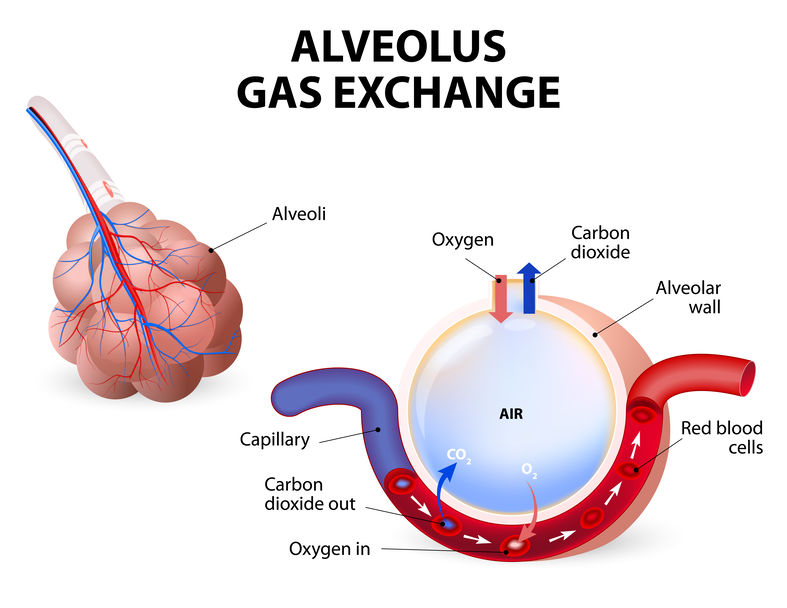Note that your final mark will not be saved in the system.
3.1.1.3 Respiratory system GapFill
You must fill all the gaps before clicking ‘Check Answers!’

During exercise, there is an increased demand for oxygen at the muscle in order to undergo aerobic respiration. There is also an increased need to remove carbon dioxide, which is produced at the muscle as a by-product of respiration. The gas exchange systems at the lungs and the muscle are important in ensuring this is achieved.
During exercise, there is an increased volume of oxygen inhaled due to a combination of increases in breathing and volume. This increases the availability of oxygen for gaseous exchange at the alveoli. This availability is measured in terms of , which is the pressure that one gas exerts in a mixture of gases compared to if it occupied the same volume alone. It is proportional to the concentration of the gas in that mixture.
At the alveoli in the lungs, there is a greater partial pressure (and thus concentration) of oxygen than in the surrounding . This partial pressure of oxygen in the alveoli increases as a result of exercise, creating a larger diffusion for an increased diffusion of oxygen from the alveoli into the . This results in a larger concentration of oxygen being transported in the blood to the muscle where it is needed for respiration.
At the muscle, there is an increase in production during exercise. This is removed from the muscle by the surrounding capillaries and transported to the lungs. There is a greater partial pressure of carbon dioxide in the capillaries surrounding the lungs than in the alveoli, creating a large diffusion gradient for carbon dioxide to diffuse out of the capillaries and into the alveoli for into the atmosphere. This occurs at the same time as the diffusion of oxygen in the opposite direction, which is why this process is known as gaseous exchange.